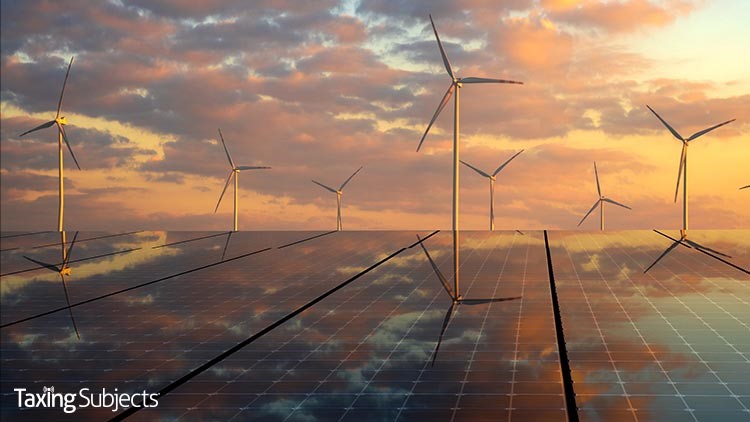by | Jul 8, 2021 | Tax Tips and News
For self-employed taxpayers and household employers, it’s time, as they say, to pay the piper.
The CARES Act—also known as the Coronavirus Aid, Relief and Economic Security Act—gave these specific taxpayers permission to defer paying certain Social Security taxes for tax year 2020.
“Defer” is the operative term; this change did not eliminate the need to pay Social Security tax owed. Half of the deferred Social Security tax is due by Dec. 31, 2021; the other half is due in Uncle Sam’s pockets by Dec. 31, 2022.
The deferred taxes can be paid any time on or before the due date.
What are the options for repayment of Social Security tax?
The IRS says taxpayers wishing to repay Social Security taxes can use the Electronic Federal Tax Payment System (EFTPS) or pay with a credit or debit card, money order, or check. Further, the agency stresses these payments:
- Should be separate payments from other tax payments to ensure they are applied to the deferred tax balance on the tax year 2020 Form 1040 since IRS systems won’t recognize the payment for deferred tax if it is with other tax payments or paid with the current Form 1040.
- Should designate the payment as “deferred Social Security tax.”
Those paying deferred Social Security tax using EFTPS should select 1040 US Individual Income Tax Returns and set the type of payment to deferred Social Security tax.
The payment should be applied to the 2020 tax year, since that’s where the payment was deferred.
Another payment option is to set up a same-day wire transfer of funds. Keep in mind, however, this option may entail a bank fee to complete. Some other electronic options for paying taxes, such as Electronic Funds Withdrawal or IRS Direct Pay, may not apply to this type of payment.
For more information on the payment of deferred taxes, go online to EFTPS.gov.
What if a taxpayer is unable to pay in full?
Taxpayers unable to pay the complete amount of deferred tax are advised to pay whatever they can by each of the two due dates to limit penalty and interest charges.
Taxpayers get a balance-due notice from the IRS if they don’t pay the full installment amount. To make a payment or to apply for an IRS payment plan, follow the directions given in the notice.
For more information on ways to pay, what to do when taxpayers can’t pay and viewing their tax account, visit the Paying Your Taxes webpage on IRS.gov.
Sources: How self-employed individuals and household employers repay deferred Social Security tax; Paying Your Taxes.
– Story provided by TaxingSubjects.com
by | Jul 2, 2021 | Tax Tips and News
Monthly Advance Child Tax Credit payments are set to begin in two weeks. While it’s too late to change the bank account that will receive the July 15 payment, qualifying taxpayers can now use a tool on IRS.gov to update their information before the August payment is issued.
The Internal Revenue Service announced a new feature for the Child Tax Credit Update Portal this week that will let users change the routing number used to receive direct deposits of the monthly advance payments. Those who want to update their account in time for next month’s payments need to do so by August 2—otherwise, the agency will send money using the method currently on file on August 13.
Check eligibility and more with the Child Tax Credit Update Portal.
Prior to the most recent feature update, the Child Tax Credit Update Portal still served as an important payment management tool for taxpayers—like helping families determine eligibility for the credit and choosing their payment method.
“First, families should use the Child Tax Credit Update Portal to confirm their eligibility for the payments,” the IRS says. “If eligible, the tool will also indicate whether they are enrolled to receive their payments by direct deposit.” The displayed information is where the July 15 payment will be direct deposited, “and if they don’t change the account, all future payments will go there as well.”
The IRS says that everyone should choose direct deposit for these monthly payments, citing speed, security, and convenience. Luckily, opting into direct deposit only requires entering three pieces of information:
- Routing number
- Account number
- Account type
When it comes to the type of account, users need to “[indicate] whether it is a savings or checking account.”
What if someone doesn’t want to get monthly advance payments of the Child Tax Credit?
The IRS notes that some taxpayers may not want to receive the Advance Child Tax Credit payments. Some might not want to deal with reconciling the payments next year (Topic H under the Child Tax Credit FAQ), while others may have one of the following reasons:
- Their income in 2021 is too high to qualify them for the credit.
- Someone else (an ex-spouse or another family member, for example) qualifies to claim their child or children as dependents in 2021
- Their main home was outside of the United States for more than half of 2021
Regardless, the IRS says the Child Tax Credit Update Portal will even let taxpayers opt out of the monthly payments: Simply choose the “unenroll feature.”
To learn more about the Child Tax Credit Update Portal and the Advance Child Tax Credit payments, visit IRS.gov.
Source: IR-2021-143
– Story provided by TaxingSubjects.com
by | Jul 2, 2021 | Tax Tips and News
New guidance from the Internal Revenue Service and the Treasury Department is aimed at keeping the lights on at renewable energy projects delayed by the COVID-19 pandemic.
Previous IRS notices gave eligible renewable energy projects a Continuity Safe Harbor, giving the green light to claim the production tax credit and the investment tax credit, as long as the overall project goes on line within a certain period of time.
Under this scenario, the clock starts ticking in the taxable year that construction started.
Unfortunately, there’s a problem.
Even with the recent inroads made against COVID-19, the pandemic has continued to impact construction of renewable energy projects, pushing them farther behind schedule, putting them at risk of missing the Continuity Safe Harbor deadline altogether.
This new guidance delivers relief to renewable energy projects that have been hit by pandemic-driven project delays, allowing them more time to comply with the Continuity Safe Harbor. It also introduces more flexibility for these projects to choose which way to best fulfill the continuity requirement outside of the safe harbor.
How does the safe harbor work?
The changes are laid out in Notice 2021-41. This new guidance gives qualified renewable energy projects a choice of two ways to show the taxpayer’s started construction on the project: the Physical Work Test, or the Five Percent Safe Harbor.
Once construction begins, the project has to make continuous progress toward completion in order satisfy requirements.
If the Physical Work test is used, the project falls under the Continuous Construction Test to show that the project has made continuous progress. With the Five Percent Safe Harbor method, the project is measured under the Continuous Efforts Test.
Notice 2021-41 extends the Continuity Safe Harbor period beyond that announced previously and covers renewable projects that started in 2016 through 2020:
- For projects for which construction began under the Physical Work Test or the Five Percent Safe Harbor in 2016, 2017, 2018, or 2019, the Continuity Safe Harbor is satisfied if the project is placed in service by the end of a calendar year that is no more than 6 calendar years after the calendar year during which construction began; and
- For projects for which construction began under the Physical Work Test or the Five Percent Safe Harbor in calendar year 2020, the Continuity Safe Harbor is satisfied if the project is placed in service by the end of the calendar year that is no more than 5 calendar years after the calendar year during which construction began.
In addition, the notice also gives qualifying projects a kind of escape hatch.
If the Continuity Safe Harbor doesn’t apply to their project, taxpayers can still satisfy the continuity requirement if they can satisfy either the Continuous Construction or the Continuous Efforts Tests.
This provision can be used regardless of the method the taxpayer used when construction commenced.
For more information about tax relief for businesses impacted by the COVD-19 pandemic, see Coronavirus Tax Relief for Businesses and Tax-Exempt Entities.
Source: Treasury, IRS extend safe harbor for renewable energy projects.
– Story provided by TaxingSubjects.com



